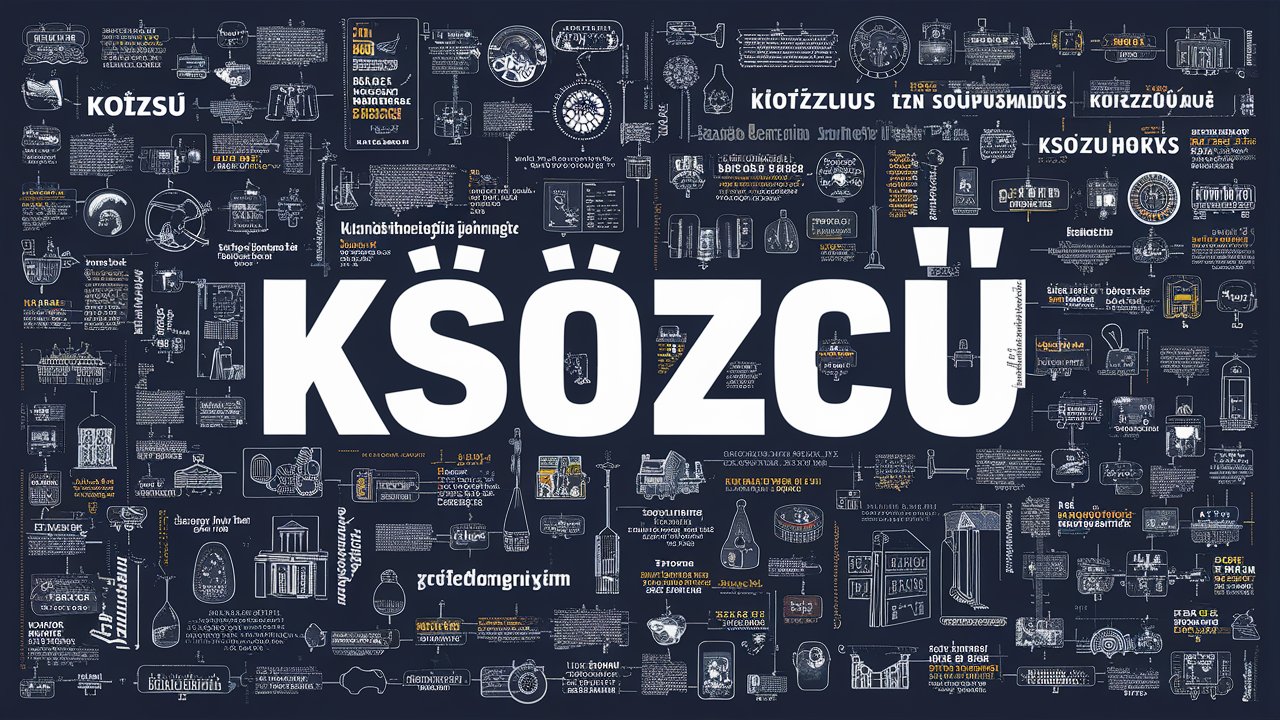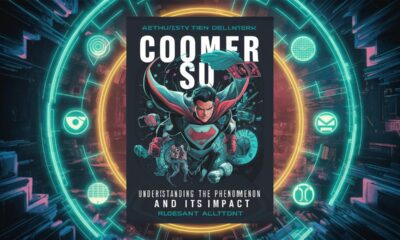Blog
Soutaipasu: Complete Guide, Meaning, and Usage

The term soutaipasu has gained attention across various contexts, yet many people remain unaware of its true depth, cultural background, and practical applications. Whether you have encountered it in linguistic studies, cultural exchanges, or lifestyle discussions, understanding soutaipasu requires exploring its origins, meaning, and significance. In this comprehensive guide, we will take a closer look at what soutaipasu means, its historical and cultural importance, how it is used today, and why it continues to intrigue people worldwide.
What is Soutaipasu?
Soutaipasu (ソウタイパス) is a Japanese term derived from two parts: “soutai” (meaning relative, alternate, or opposing) and “pasu” (a borrowed word from English “pass”). Together, the word can be interpreted as a relative pass, substitute pass, or temporary permission depending on its context. In Japanese culture, soutaipasu can represent flexibility, substitution, or alternatives that make a system more adaptable.
It is not just a simple translation but a concept that embodies adaptability, secondary access, and flexible pathways. From transportation systems to educational frameworks, soutaipasu has found meaningful roles in everyday life.
Historical Roots of Soutaipasu
The origin of soutaipasu can be traced back to Japan’s rapid modernization period, where English loanwords were adopted and blended with Japanese terms to fit local needs. During the 20th century, when education, transport, and organizational systems expanded, soutaipasu was introduced as a practical solution for alternate access or temporary privileges.
In railways, for instance, soutaipasu was used to indicate alternate route passes, allowing commuters to use substitute trains when a primary line was unavailable. Over time, the word extended beyond transportation and began appearing in academic, cultural, and even business-related contexts.
Modern Applications of Soutaipasu
1. Soutaipasu in Education
In schools and universities, soutaipasu can symbolize alternative study paths or substitute options for students. For example, if a student cannot attend a particular class, a soutaipasu might allow them to access an equivalent lecture or supplementary material. This system ensures flexibility in learning without losing educational value.
2. Soutaipasu in Transportation
Transportation remains one of the most recognized areas where soutaipasu is used. Train companies often issue soutaipasu tickets, enabling passengers to switch routes when delays or disruptions occur. This provides reliability, customer satisfaction, and seamless mobility for commuters.

3. Soutaipasu in Business and Work Culture
In the corporate world, soutaipasu can symbolize delegation, substitute responsibilities, or alternative solutions. When a person is unavailable, a soutaipasu system ensures another employee can step in and handle the role. This practice reflects Japanese work ethics of balance, adaptability, and collective responsibility.
4. Soutaipasu in Daily Life
Beyond institutional usage, soutaipasu represents alternatives in everyday decision-making. Whether it is about choosing a substitute activity, meal, or solution to a challenge, the idea of soutaipasu resonates with adaptability and resilience.
Cultural Significance of Soutaipasu
The concept of soutaipasu reflects a broader Japanese philosophy of flexibility and harmony. Instead of rigid systems, soutaipasu highlights the value of alternatives, adaptability, and cooperation. It emphasizes that when the main path is blocked, there is always another option available.
In Japanese society, this mindset nurtures resilience and innovation, enabling individuals and organizations to thrive in changing circumstances. By embracing soutaipasu, people learn not only to adapt but also to grow stronger through alternatives.
Soutaipasu and Language Evolution
From a linguistic standpoint, soutaipasu showcases how loanwords and native terms merge to form new concepts in Japanese. The adaptation of “pass” into Japanese vocabulary demonstrates language fluidity and the cultural acceptance of foreign influences.
Soutaipasu also reveals how a single word can evolve in multiple sectors—from transport to business, from education to culture—retaining its essence of adaptability while adopting specific contextual meanings.
Why Soutaipasu Matters Today
In an era defined by uncertainty and rapid change, soutaipasu remains more relevant than ever. Its essence—finding alternatives, offering flexibility, and ensuring continuity—is crucial in modern education, digital transformation, travel, and global business strategies.
Companies today adopt soutaipasu-inspired models by creating backup systems, alternative access routes, and substitute solutions that prevent disruptions. Individuals too, consciously or unconsciously, apply soutaipasu in personal decisions, ensuring that life remains balanced and adaptable in uncertain circumstances.
Frequently Asked Questions (FAQ) About Soutaipasu
Q1: What does soutaipasu literally mean?
Soutaipasu is a Japanese term combining “soutai” (relative/alternative) and “pasu” (pass), meaning a substitute or alternative pass depending on context.
Q2: Is soutaipasu only used in transportation?
No. While transportation is a common context, soutaipasu is also used in education, business, and everyday life, symbolizing alternatives and substitutions.
Q3: How is soutaipasu culturally significant?
It embodies the Japanese value of flexibility and harmony, teaching that alternatives always exist and adaptability ensures resilience.
Q4: Can soutaipasu be applied outside Japan?
Yes. The principle of soutaipasu—seeking flexible alternatives—is universally applicable in business, education, and daily challenges worldwide.
Q5: Why is soutaipasu important in modern times?
With uncertainties in travel, work, and technology, soutaipasu provides stability through alternatives and substitutes, ensuring continuity and balance.
Conclusion
Soutaipasu is more than just a Japanese word—it is a concept of adaptability, resilience, and alternative pathways. From its origins in rail transport to its broader applications in education, business, and daily life, soutaipasu continues to reflect a universal truth: there is always another way forward. By embracing soutaipasu in our decisions, systems, and strategies, we prepare ourselves for a more flexible, innovative, and harmonious future.
Blog
Methatreams: The Ultimate Guide to Understanding and Utilizing Them

In today’s fast-paced digital landscape, methatreams have emerged as a pivotal concept for businesses, developers, and technology enthusiasts. As the internet evolves, staying ahead requires a deep understanding of innovative solutions, and methatreams are one such revolutionary approach. In this comprehensive guide, we will explore the definition, benefits, applications, and future potential of methatreams, while providing practical insights on how they can transform industries across the globe.
What Are Methatreams?
Methatreams can be described as advanced data flow structures that allow seamless integration of multiple streams of information into a unified system. Unlike traditional data channels, which often operate in isolation, methatreams enable synchronized, real-time processing of vast amounts of data. They are designed to handle the increasing complexity of digital ecosystems, making them a cornerstone of next-generation technology solutions.
At their core, methatreams serve as a bridge between raw information and actionable insights. By leveraging intelligent algorithms, they filter, optimize, and distribute data to ensure efficiency and accuracy across platforms.
Why Methatreams Are Important in the Digital Era
The significance of methatreams lies in their ability to reduce data silos and increase collaboration across digital platforms. In a world where businesses rely on rapid data-driven decision-making, having an integrated system that minimizes redundancy and maximizes clarity is crucial. Methatreams empower companies to:
-
Improve operational efficiency by streamlining workflows.
-
Enhance user experiences through personalized, data-rich interactions.
-
Ensure real-time data accessibility for faster, more accurate decisions.
-
Support scalability as organizations expand their digital presence.
With industries generating unprecedented volumes of data daily, methatreams provide a structured and reliable approach to harnessing this information effectively.
Key Features of Methatreams
Understanding the distinctive features of methatreams helps in recognizing their transformative potential. Some of the most notable characteristics include:
-
Real-Time Processing – Methatreams ensure that incoming data is analyzed instantly, reducing lag and enabling quick responses.
-
Scalability – As organizations grow, methatreams adapt to increasing data demands without compromising speed or performance.
-
Data Optimization – They automatically filter out irrelevant or redundant data, ensuring only meaningful information is processed.
-
Interoperability – Methatreams integrate seamlessly with existing technologies, making them versatile across different platforms.
-
Security Enhancements – Built-in protocols ensure sensitive data is protected during transfer and storage.
These features make methatreams highly adaptable and future-ready, aligning with the evolving needs of global industries.
Applications of Methatreams Across Industries
The versatility of methatreams allows them to be applied across a wide range of industries. Let’s explore how different sectors are harnessing their power:
1. Information Technology and Software Development
Methatreams are becoming integral to software ecosystems where real-time communication and collaboration are necessary. Developers rely on them for handling complex data flows in cloud computing, microservices, and AI-driven applications.
2. Healthcare and Life Sciences
In healthcare, methatreams enable the integration of patient data from multiple sources such as wearables, hospital records, and diagnostic tools. This results in personalized treatment plans and more accurate diagnoses.
3. Financial Services
The finance industry benefits immensely from methatreams by processing large volumes of transactions in real-time, enabling fraud detection, algorithmic trading, and risk management with unmatched precision.
4. E-commerce and Digital Marketing
Methatreams provide businesses with the ability to analyze customer behavior instantly, leading to targeted marketing campaigns, improved customer engagement, and optimized shopping experiences.
5. Media and Entertainment
For streaming platforms and content providers, methatreams ensure high-quality, uninterrupted experiences by managing and distributing content effectively across global audiences.
6. Smart Cities and IoT
Methatreams play a central role in powering smart city infrastructures, including traffic management, energy distribution, and public safety systems, all of which rely on continuous data exchange.

Benefits of Adopting Methatreams
Organizations that embrace methatreams experience a wide range of benefits that directly impact performance and growth. Some of the most prominent advantages include:
-
Efficiency Gains: Automating data flows reduces manual interventions and errors.
-
Faster Decision-Making: Access to real-time insights leads to quicker, more informed actions.
-
Cost Optimization: By reducing redundancy and improving system performance, operational costs are minimized.
-
Enhanced Innovation: Methatreams provide a foundation for developing advanced AI, machine learning, and predictive analytics applications.
-
Future-Proofing: Businesses adopting methatreams remain competitive by aligning with the latest digital transformation trends.
Challenges and Considerations in Implementing Methatreams
Despite their many advantages, adopting methatreams comes with challenges that organizations must address:
-
Complex Integration: Implementing methatreams into legacy systems may require significant restructuring.
-
Resource Requirements: Proper deployment demands skilled professionals and infrastructure investments.
-
Data Privacy Concerns: Ensuring compliance with global data protection laws is critical.
-
Ongoing Maintenance: Continuous monitoring and updates are essential to maintain system performance.
By proactively addressing these challenges, companies can fully leverage the benefits of methatreams while minimizing risks.
The Future of Methatreams
As industries continue to embrace artificial intelligence, IoT, and big data analytics, the role of methatreams will expand further. We can expect to see:
-
Greater automation of workflows across multiple industries.
-
Deeper integration with AI-driven solutions for predictive analytics.
-
Enhanced global connectivity, powering smart cities and cross-border enterprises.
-
Continuous improvements in data security and compliance mechanisms.
Methatreams are not just a trend; they represent a fundamental shift in how we approach digital infrastructure and data management.
Conclusion
In conclusion, methatreams represent a game-changing innovation that addresses the growing complexities of digital ecosystems. By providing real-time processing, scalability, and optimized data flows, they are shaping the future of industries worldwide. Organizations that embrace methatreams today are positioning themselves for long-term growth, efficiency, and innovation.
Frequently Asked Questions (FAQ) About Methatreams
Q1. What makes methatreams different from traditional data streams?
Methatreams provide synchronized, optimized, and secure data flows, unlike traditional streams that often function in isolated silos.
Q2. Can small businesses benefit from methatreams?
Yes, methatreams are scalable and can be tailored to the needs of businesses of any size, providing efficiency and real-time insights.
Q3. Are methatreams secure for sensitive industries like healthcare and finance?
Absolutely. Methatreams come with advanced encryption and compliance features that ensure the safe handling of sensitive data.
Q4. What is the future of methatreams?
The future points toward deeper integration with AI, IoT, and predictive analytics, making methatreams a crucial component of global digital transformation.
Q5. How can businesses start implementing methatreams?
Companies should begin with a clear strategy, invest in skilled teams, and gradually integrate methatreams into their existing digital infrastructure.
Blog
Ksözcü: Everything You Need to Know About the Term, Its Meaning, and Usage

The term ksözcü has been gaining increasing attention across digital platforms, forums, and search engines. For many, it is a word that sparks curiosity and prompts questions about its origin, meaning, cultural significance, and practical usage. In this article, we will provide a comprehensive analysis of ksözcü, exploring its etymology, applications in various contexts, and why it has become an important keyword to understand. By the end of this article, you will have a clear and detailed understanding of ksözcü, ensuring you can interpret and use it effectively.
What is Ksözcü?
The word ksözcü is unique and stands out due to its linguistic structure. In essence, ksözcü is associated with the idea of a spokesperson, representative, or messenger. Derived from linguistic roots that connect to communication and the transmission of information, it embodies the concept of being a voice for others. Whether used in social, political, or cultural contexts, ksözcü conveys the role of someone who speaks on behalf of a community, group, or ideology.
Etymology and Origins of Ksözcü
The etymological roots of ksözcü can be traced back to Turkic language structures, where the suffix “-cü” denotes a profession, role, or someone who performs an action. For instance, in Turkish, words ending with “-cü” often signify a person associated with a particular task. Therefore, ksözcü is closely aligned with the meaning of “the one who speaks or represents.” This linguistic framework highlights how the term evolved into a cultural symbol of representation and communication.
The Role of Ksözcü in Communication
A ksözcü is not merely a literal spokesperson but also a symbolic figure. In politics, business, or organizations, a ksözcü embodies the voice of authority, trust, and accountability. Their words carry significant weight because they are seen as the official channel of information. This role underscores the importance of clarity, transparency, and credibility, as the ksözcü is often the first point of contact between the public and the institution they represent.
Cultural Significance of Ksözcü
In many societies, the concept of ksözcü extends beyond formal representation. It carries cultural significance as a bridge between the people and leaders, between communities and institutions. Throughout history, messengers and representatives have held pivotal roles in diplomacy, governance, and social cohesion. The ksözcü thus embodies a cultural archetype that resonates deeply in contexts where collective voices need a single channel of expression.
Modern Usage of Ksözcü
Today, ksözcü has become a commonly searched and discussed keyword, reflecting its relevance in both linguistic and digital spaces. The modern interpretation includes roles such as:
-
Political ksözcü: An official party spokesperson or representative who communicates policies and public positions.
-
Corporate ksözcü: A company’s designated representative who addresses media inquiries, crises, or brand communications.
-
Community ksözcü: A figurehead who speaks on behalf of grassroots movements or organizations.
This wide spectrum of usage highlights how ksözcü continues to evolve in meaning, adapting to the needs of different fields and audiences.
Ksözcü in Media and Journalism
One of the most visible applications of the term is in media and journalism. A ksözcü in the press is responsible for articulating official viewpoints, managing narratives, and ensuring accurate representation of facts. They serve as the link between institutions and the public, which makes them an essential part of democratic systems where information must flow openly and transparently.
The media often portrays ksözcü figures as symbols of truth, leadership, or controversy, depending on their communication style and credibility. Thus, the role of ksözcü in journalism is not just functional but also perceptual, shaping how people interpret messages.

Why Ksözcü Matters in the Digital Era
In today’s digital world, where information spreads instantly across social platforms and news sites, the importance of ksözcü has grown exponentially. Miscommunication or misinformation can damage reputations and cause confusion. A ksözcü provides clarity, consistency, and credibility in an environment where voices compete for attention.
For organizations and individuals, having a reliable ksözcü ensures that their narrative remains controlled, accurate, and impactful. In an age of digital noise, this role is more critical than ever.
Ksözcü as a Symbol of Trust
Trust lies at the heart of the ksözcü role. When someone is appointed as ksözcü, it reflects a high level of confidence from the group they represent. Their words are not just personal opinions but are seen as official statements, carrying responsibility and authority. This trust also emphasizes the need for ksözcü figures to maintain integrity, professionalism, and accountability.
Challenges Faced by a Ksözcü
While the position of ksözcü is powerful, it also comes with challenges. A ksözcü must navigate:
-
High public scrutiny – Their statements are often dissected and debated.
-
Pressure of accuracy – Any misinformation can harm credibility.
-
Balancing diplomacy and honesty – They must remain truthful while protecting the interests of their group.
These challenges underscore the delicate nature of being a spokesperson, requiring strong communication skills and emotional intelligence.
Conclusion
The term ksözcü is much more than a word; it is a powerful concept rooted in communication, trust, and representation. From its linguistic origins to its modern applications in politics, media, and business, ksözcü stands as a symbol of how important it is to have a voice that represents collective interests. In the digital era, this role has only grown more significant, as clarity and trust are essential to navigating today’s information landscape.
Understanding ksözcü allows us to appreciate its cultural depth, professional importance, and symbolic meaning. Whether seen as a political representative, corporate spokesperson, or community voice, ksözcü embodies the timeless human need for connection through communication.
FAQ About Ksözcü
Q1: What does ksözcü literally mean?
Ksözcü literally translates to “spokesperson” or “representative,” derived from linguistic roots that emphasize speaking on behalf of others.
Q2: Is ksözcü only used in politics?
No, ksözcü is widely used in politics, corporate communication, media, journalism, and community representation.
Q3: Why is ksözcü important in modern society?
In the digital era, ksözcü ensures clarity, trust, and accuracy in communication, preventing misinformation and strengthening credibility.
Q4: Can ksözcü be an unofficial role?
Yes, in many cases, community leaders or activists act as ksözcü informally, speaking on behalf of groups without official titles.
Q5: How does a ksözcü build trust?
By maintaining transparency, accuracy, and accountability, a ksözcü builds long-term trust with both the group they represent and the public.
Blog
Afruimwagens: The Complete Guide to Efficient Cleaning Solutions

In the world of professional cleaning, catering, and facility management, efficiency and organization are crucial. Afruimwagens, also known as clearing trolleys or utility carts, are indispensable tools that streamline daily operations in restaurants, hotels, hospitals, schools, and industrial environments. These multifunctional carts are designed to transport dishes, cutlery, waste, cleaning supplies, or food safely and quickly, reducing manual effort while maintaining hygiene standards.
Choosing the right afruimwagen is not just about convenience—it directly impacts workflow, staff productivity, and customer satisfaction. In this comprehensive guide, we explore everything you need to know about afruimwagens, from types and materials to maintenance and buying tips.
What Are Afruimwagens?
Afruimwagens are mobile carts with shelves, bins, or compartments designed for collecting and transporting items. They are commonly used for:
-
Clearing dirty dishes in restaurants and catering halls.
-
Transporting clean crockery and cutlery to dining areas.
-
Collecting laundry in hotels or healthcare facilities.
-
Storing and moving cleaning products and tools.
-
Safely disposing of waste.
The primary goal of an afruimwagen is to improve operational flow and reduce the time and physical effort required for transporting items. Their design often includes ergonomic handles, smooth-rolling wheels, and durable materials to ensure both efficiency and comfort.
Types of Afruimwagens
Not all afruimwagens are created equal. Different industries require different functionalities, and manufacturers design specific models to meet these demands. The most common types include:
1. Standard Shelf Afruimwagens
These are the most widely used carts, featuring multiple open shelves. They are ideal for restaurants, hotels, and schools where plates, cups, and trays need to be transported quickly.
2. Closed Afruimwagens
Equipped with doors or panels, these carts offer a more hygienic solution by protecting items from dust or contaminants. They are often used in healthcare facilities and food service environments.
3. Waste Collection Afruimwagens
Specially designed for garbage handling, these carts come with waste bins, bag holders, and compartments for separating recyclable materials.
4. Multifunctional Cleaning Afruimwagens
These combine storage for cleaning supplies, mops, buckets, and waste bags. They are essential for janitorial staff in large buildings such as airports, shopping malls, or office complexes.
5. Heavy-Duty Afruimwagens
Made of reinforced steel or robust plastic, these are designed for industrial settings where heavy loads, machinery parts, or large items need to be moved efficiently.
Materials Used in Afruimwagens
The choice of material greatly influences the durability, weight capacity, and hygiene of afruimwagens. The most common materials include:
-
Stainless Steel: Strong, hygienic, and easy to clean, ideal for food service and medical use.
-
High-Density Plastic (HDPE or Polypropylene): Lightweight, affordable, and resistant to corrosion, commonly used in catering and cleaning sectors.
-
Aluminum: A perfect balance of strength and lightweight properties.
-
Combination Designs: Some afruimwagens use a blend of plastic frames with steel reinforcements for added durability.
Afruimwagens are more than just utility carts—they are a cornerstone of efficiency, hygiene, and organization in modern facilities.
Benefits of Using Afruimwagens
Investing in quality afruimwagens brings numerous benefits to both businesses and employees:
-
Improved Efficiency: Staff spend less time walking back and forth, allowing them to focus on customer service and productivity.
-
Enhanced Hygiene: Closed compartments and waste-separating carts reduce cross-contamination.
-
Cost Savings: By minimizing breakages and improving workflow, businesses save money in the long term.
-
Ergonomics and Safety: Designed with user comfort in mind, reducing the risk of injuries caused by lifting and carrying.
-
Versatility: One afruimwagen can serve multiple purposes depending on attachments and configurations.
Key Features to Look for in an Afruimwagen
When purchasing an afruimwagen, consider the following features:
-
Load Capacity: Ensure it can handle the intended weight without strain.
-
Wheel Quality: Smooth, lockable wheels improve maneuverability and safety.
-
Ergonomic Handles: Comfortable grip reduces strain during use.
-
Modular Design: Adjustable shelves, removable bins, or customizable compartments.
-
Hygienic Surfaces: Easy-to-clean materials are essential for food service and healthcare.
-
Noise Reduction: Silent wheels and padded trays help maintain a pleasant environment.
Industries That Rely on Afruimwagens
Afruimwagens are not limited to one field; they play a vital role across multiple industries:
-
Hospitality and Catering: For transporting dishes, trays, and cutlery during events or in daily operations.
-
Healthcare: Moving medical supplies, patient meals, and laundry efficiently.
-
Education: Cafeterias in schools and universities use them for meal distribution and clearing.
-
Industrial Settings: Heavy-duty carts are used for tools, parts, and equipment handling.
-
Cleaning and Facility Management: Essential for janitorial services in high-traffic buildings.
Maintenance Tips for Afruimwagens
To maximize the lifespan of your afruimwagen, proper maintenance is essential:
-
Regular Cleaning: Wipe down surfaces after each use, especially in food-related environments.
-
Inspect Wheels and Casters: Ensure they are lubricated and free from obstructions.
-
Check for Damage: Replace broken shelves, handles, or bins promptly to avoid accidents.
-
Sanitize Frequently: In healthcare and hospitality, disinfecting is crucial to maintaining hygiene standards.
-
Proper Storage: Store carts in designated areas to prevent unnecessary wear and tear.
Buying Guide: How to Choose the Right Afruimwagen
When selecting an afruimwagen, businesses should evaluate:
-
Intended Use: Define whether it’s for dishes, waste, cleaning supplies, or multipurpose use.
-
Budget: Balance between affordability and durability.
-
Space and Mobility: Consider the width of hallways, elevators, or storage rooms.
-
Customization Options: Some suppliers offer modular designs with tailored accessories.
-
Brand Reputation: Trusted brands often provide better warranties and after-sales service.
Conclusion
Afruimwagens are more than just utility carts—they are a cornerstone of efficiency, hygiene, and organization in modern facilities. Whether in a busy restaurant, a hospital ward, or an industrial workshop, investing in the right afruimwagen ensures smoother workflows, happier staff, and improved service quality. By considering factors such as type, material, features, and maintenance, businesses can select a model that fits their exact needs and maximizes long-term value.
Frequently Asked Questions (FAQ)
1. What is an afruimwagen used for?
An afruimwagen is used for transporting dishes, cleaning supplies, waste, or laundry in industries such as hospitality, healthcare, and facility management.
2. Which material is best for afruimwagens?
Stainless steel is ideal for hygiene and durability, while high-density plastic is lightweight and cost-effective.
3. How do I maintain an afruimwagen?
Regular cleaning, wheel inspection, sanitizing, and proper storage are key to extending its lifespan.
4. Can one afruimwagen serve multiple purposes?
Yes, multifunctional models are available that combine waste collection, storage, and cleaning compartments.
5. Are afruimwagens suitable for industrial use?
Heavy-duty afruimwagens made of reinforced materials are specifically designed for industrial environments.
-

 Entertainment2 months ago
Entertainment2 months agoHitaar – Meaning, Significance, and Complete Guide
-

 Technology2 months ago
Technology2 months agoThe Ultimate Guide to Trucofax: Features, Benefits, and How It Works
-

 Trends2 months ago
Trends2 months ago“Coomer SU: Understanding the Phenomenon and Its Impact”
-

 Business2 months ago
Business2 months agoTroozer com – Everything You Need to Know About the Platform
-

 Business1 month ago
Business1 month agoهنتاوي.com – The Complete Guide to Understanding, Accessing, and Exploring Online Content Safely
-

 Technology2 months ago
Technology2 months ago“How to Redeem Robux on iRobux.com – Step-by-Step Guide (2024)”
-

 Science2 months ago
Science2 months agoUnderstanding HCOOH + CH₂ → H₂O: A Complete Guide
-

 Technology2 months ago
Technology2 months agoHMS Photovoltaik: The Future of Solar Energy Efficiency & Innovation


